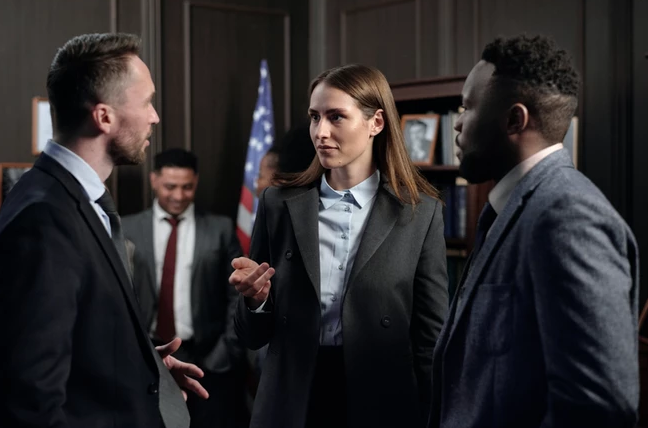5 Top Leadership Characteristics
What are the elements that comprise an effective leader? While there may not be universal agreement on what those qualities are, I believe the following characteristics are at or near the top of the list more often than not. For many years, I worked in the education field as a teacher and principal in multiple public and private school systems. I also earned bachelor’s and master’s degrees in educational leadership. Now, I own my own professional coaching and consulting business and offer my clients leadership development services, as many people are interested in improving their skills in this area of their professional and personal lives. These qualities are based on my work and experience in these fields over time.
1) Lead by Example
People want to know their supervisor, team captain, or CEO is willing to roll up their sleeves and get into the trenches with them. What kind of imagery is evoked toward someone who “rules in an ivory tower”, rarely leaves his office, or asks others to do things she is not willing to do herself? Does it inspire people to go the extra mile, or merely do enough to get by? How does it effect organizational culture, climate, and sense of teamwork? Conversely, what kinds of thoughts do you have toward someone who was intentional about lending a hand to make the load lighter for you or assist in a pinch? A true leader not only talks the talk but, more importantly, walks the walk. As the saying goes, talk is cheap. What are you doing to show your people they matter to you? What actions are you taking to come alongside those you work, play, and live with?
2) Collaborate
Most of us naturally want to be genuinely listened to, and our input honestly considered. It is a sign not only of professional respect, but wisdom as well for a leader to garner feedback from those around her. As a principal, I knew I was not completely knowledgable about the pedagogy of teaching 8th grade science (I taught history as a teacher), nor was I an expert in Special Education. I needed to trust (see #3) my people in those areas to do their jobs in a proficient manner while I teamed with them to ensure they had the resources and support to run their departments well. As leaders, it is critical we (when appropriate) delegate and defer responsibilities to others for the long-term viability of the organization. Otherwise, people at the top who attempt to filter everything through themselves find they are on an inevitable path to burnout while sacrificing the potential of the company, school, or team.
3) Trust
Typically, organizations that thrive also experience high levels of trust. How do effective leaders build that trust? Slowly. Methodically. Genuinely. One person at a time, one day at a time. One fundamental, primary ingredient that must be present in trust-building is how people must know you are a safe person. What I mean by that, is how others need to believe you care about them and care about the team above yourself. Think for a moment about someone who was in a position of authority who, at his core, was only out for himself. Could others detect that? If so, how did it influence how they did their jobs? Most significantly, how did it impact the organization? Nothing will erode trust faster than a “gotcha” mentality in which people feel as though they need to protect themselves from an individual who is out to leverage herself at the expense of those to whom she has been entrusted. However, when strong cords of trust have been layered over time your people will experience the freedom to take risks and fully apply themselves toward their role within the group.
4) Be Vulnerable
This can be a tough one to display (especially for us men!). However, it is a beautiful vehicle to create connection and convey empathy. It could be a simple statement such as, “This is awkward and difficult for me” during a challenging conversation. As leaders, our instinct is usually to attempt to hide such thoughts. However, what we don’t often stop to realize is that chances are, people are already aware of them. Sharing our vulnerability allows for us to show authenticity, which can also lead to trust-building. As you may be noticing, many of these traits overlap and are interrelated. A common misconception is that showing vulnerability conveys weakness. I believe this is only true when combined with shortcomings related to job performance. For example, if a supervisor were to share with those who report to her she doesn’t feel competent to effectively fulfill the role of her position that would not be showing vulnerability. More than likely, it would be revealing a lack of knowledge or skill. However, this is rare. I encourage you to be strong enough to (occasionally) show weakness, which leads us to #5…
5) Be Courageous
Scott Turow is credited with the quote, “Courage is not the absence of fear but the ability to carry on with dignity in spite of it”. There are times when leaders need to be seen out front during times of uncertainty, regardless of any accompanying fear. You don’t need to try and hide your anxiety (see #4), but I also wouldn’t recommend allowing it to overcome you. Inherently, people take comfort in knowing someone is in charge and there are times when leaders must step into that void and fill that role. If other leadership characteristics have been demonstrated over time, chances are people will rally around that and show support because they know you are only human and doing your best to lead them.
In closing, I believe leadership characteristics can be learned and improved, and the five qualities I have covered are skills that are transferrable. If you would like to expand your leadership capabilities with a trained, certificated, and professional coach I invite you to contact me for a complimentary 30-minute design session.
Chuck Sheron, AELC
Reimagine Success Coaching, LLC
www.reimaginesuccesscoaching.com
[email protected]





